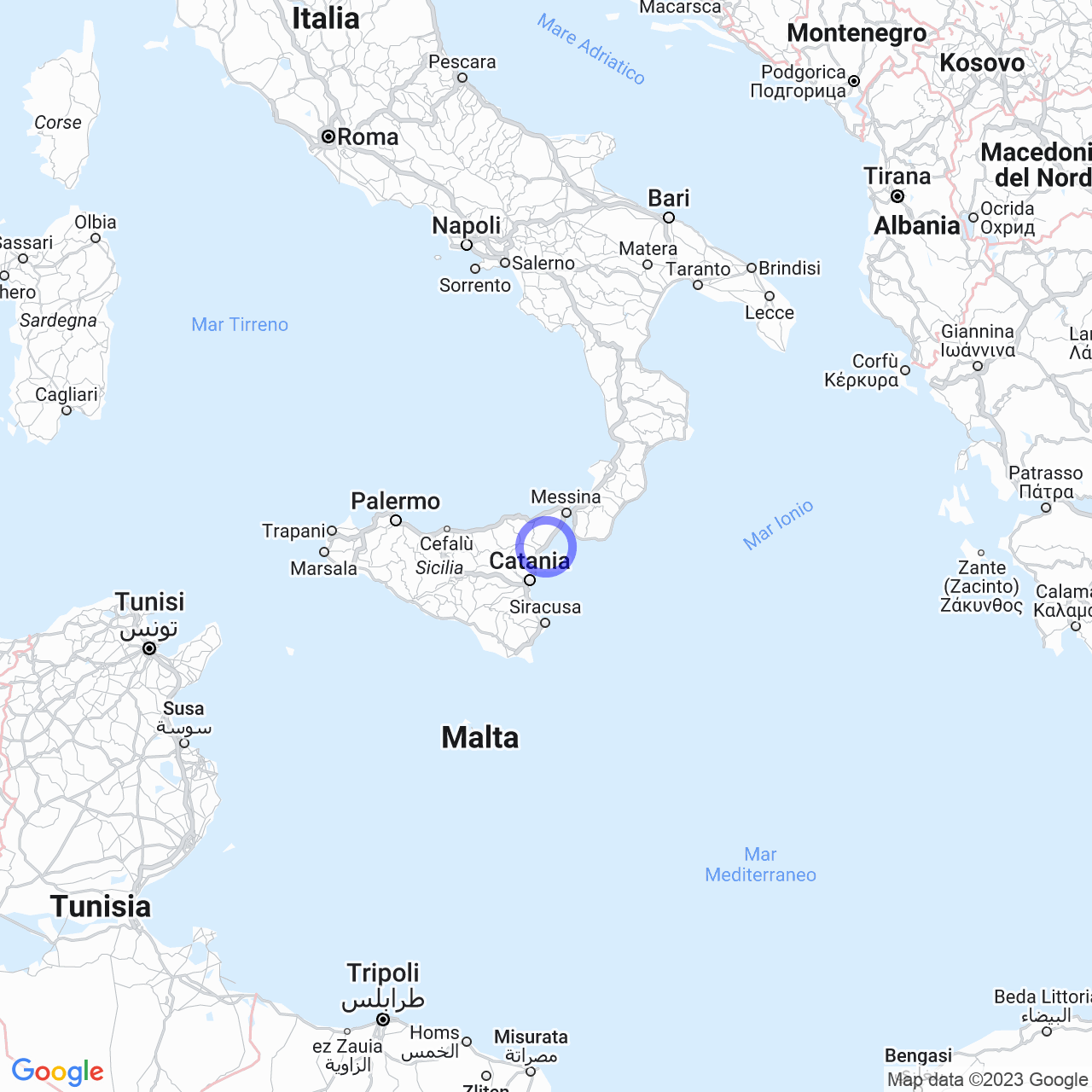Taormina
A Dream Landscape
Taormina is a municipality located in the metropolitan city of Messina, in Sicily, known all over the world for its enchanting landscape, beaches, and historical monuments. Situated on a hill at 206 meters above sea level, the city is nestled between rocks and sea, in a natural scenario of variety and contrasts that offers visitors a unique experience. The Peloritani Mountains of the Ionian coast, which surround the city, form the backdrop to the majestic Etna volcano.
Mediterranean Climate
The climate in Taormina is typically Mediterranean, with sunny and dry summers, but ventilated and never stifling, and gently mild and short winters, accompanied by some rain. Although rare, winter rainfall can also bring snow, as happened in January 2017, when the city was covered with a thick white blanket.

A City of Ancient Origins
There are many stories about the birth of Taormina, but the most accepted is the one that connects it to its hilly position. The original inhabitants of the city, the Sicilians, lived on its rock, dedicating themselves to agriculture and livestock farming. Then came the Greeks, led by the Chalcidians of Euboea, who founded the nearby Naxos, the first Greek colony in Sicily.
During the reign of the Syracusan tyrant Dionysius I, allied with the Spartans, Taormina became part of the unified Sicilian territory of the king. However, the city did not enjoy his presence for long, as Dionysius destroyed Naxos, an ally of Athens.
Historical Beauties
Taormina is a city rich in historical monuments, including the Greek-Roman Theater, the Corvaja Palace, the Cathedral of Taormina, and the San Pancrazio Church. The Greek-Roman Theater, built around the third century BC, is one of the most suggestive places in the city, attracting many tourists every year. The Corvaja Palace, on the other hand, was built during the Norman period and is one of the few buildings that did not undergo restorations. The church of San Pancrazio, instead, is a 17th-century building located not far from the Greek-Roman Theater.
Surroundings
The surroundings of Taormina are equally suggestive and worthy of a visit. The area of the Peloritani Mountains is characterized by unspoiled nature and hidden coves. The beaches of Letojanni, Giardini Naxos, and Isola Bella offer crystal clear waters and a wide choice of water activities, such as kayaking, snorkeling, and underwater fishing. In addition, the nearby city of Messina offers many leisure opportunities, as well as numerous historical buildings, including the Cathedral of Messina and the Fountain of Neptune.
Conclusions
Taormina is a city with an enchanting landscape, an ancient history, and a culture rich in historical monuments. The Greek-Roman Theater and the Corvaja Palace are just some of the most famous buildings in the city, which is worth visiting both for its beaches and cultural attractions. The city also offers many opportunities for leisure and outdoor sports, as well as a wide selection of typical dishes of Sicilian cuisine.
